If you’ve been following along with our house bank battery conversion of AGM to Lithium Ion, you know we’ve had a steep learning curve. If this the first you’ve heard, you can start back at the first battery post – or just hang in here and see what all we had to do to get it up and running! (Search for lithium ion. I would add a link, but it is tricky blogging on the phone…)
Mini-Recap
We untied the dock lines and set off on this crazy cruising adventure at the beginning of October 2016. Within a week we had a run-in with Hurricane Matthew. This little adventure at anchor involved little sun and loads of wind and rain. It didn’t take long to realize that our house battery bank was shot. We just hadn’t realized it due to a. ignorance of battery systems, and b. the luxury of being “plugged in” at the dock masking the sad state of our existing batteries.
We had a great brand of AGM batteries, but they came with Luna Sea, so no telling how old they were. And as we were learning as we went, it took ages for us to learn that we shouldn’t use more than 50% of the power in those batteries. What good is having a battery bank with 420 amp hours if you could only use a max of 210 of those hours? Considering that AGM batteries lose power with age, who knows just how little we actually had available.
In Came Lithium Ion Batteries from Relion
We bought (3)75ah lithium ion batteries. That’s 225ah – less than we were replacing. But since you can use about 80% of that power and still maintain the integrity of your batteries, it actually provides us more power. We still have room for 1 more 75ah battery if we decide we need it. And we need to make that call sooner rather than later, so the batteries will be roughly the same age.
The Struggle was Real
With 400 watts of solar mounted to our hard top, we were struggling to get the batteries full. All that space – but so little power! Camp-like conditions were beginning to wear on us. Our Luci lights (cool little solar lights that work great on a sailboat) were being brought in each night so that we could see. Gadgets were rarely getting charged – we needed each ray of sunlight to go into the battery bank in order to make it through the night. I became the Power Police and Mark became the disgruntled crew member who was scared to flip a switch for fear of me coming behind him and turning it off. (Do you REALLY need a light in the bathroom after dark?)
The Solution(s)
You can read about all of the things we tried along the Florida coast, but this post is just to tell you what we finally did to get our system operational. Again, there was a steep learning curve, but what it all boiled down to was not enough power going in to get those fancy batteries to fill up. We have a very low average output of power – so why couldn’t we get enough power in? Just simple math. Here’s the text I got from my rep that finally made me understand:
3 X 75ah = 225ah ÷ 20a= 11.25 hours
11.25 hrs to charge?! And that is if there is no draw. We certainly do not get that much sun per day – even here in the beautiful Bahamas.
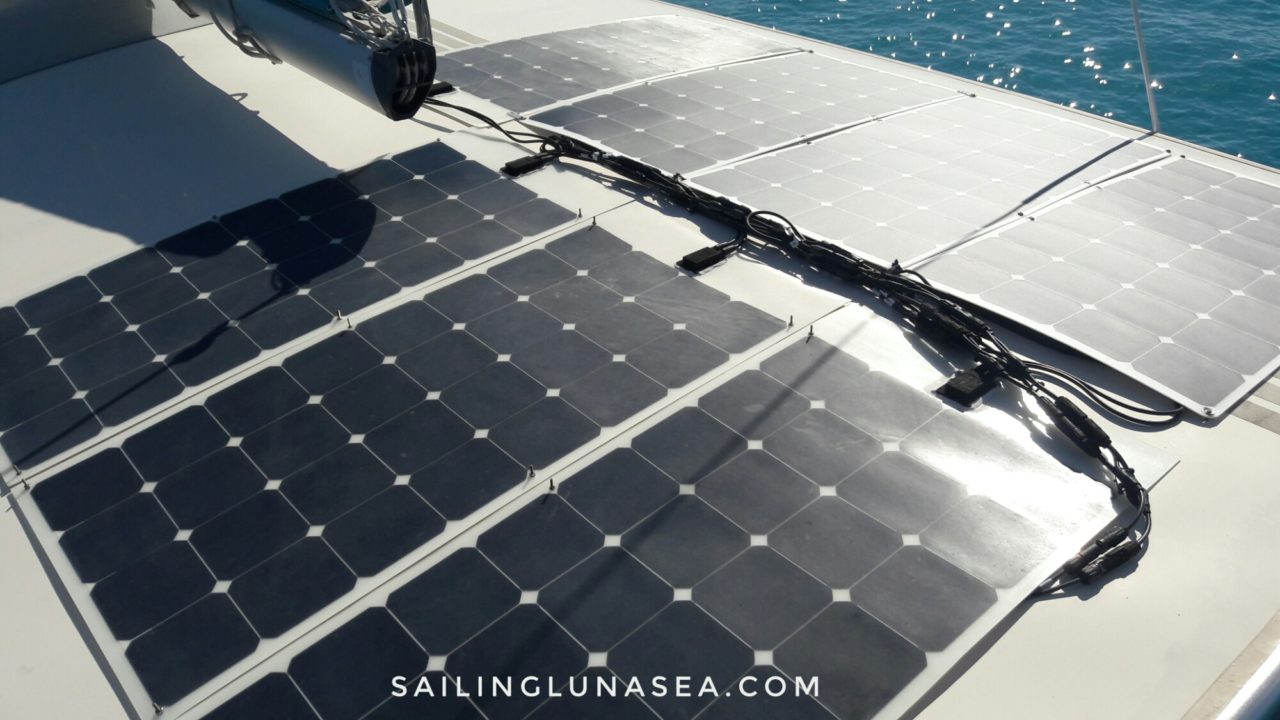
Our 400 watts of solar was not enough to fill up our batteries while using our devices (we can’t shut off the fridge just to allow the batteries to fill faster). We needed more solar. Because we don’t want to keep messing with this – and our Morning Star solar charge controller can handle up to 700 watts, that’s the route we took. We added 3 more 100 watt solar panels to the hard top – and took maximum advantage of that controller.
Alternate Source of Power
While our batteries are often full by lunch time (or even 10am), what about rainy, gray days? Most cruisers will run their engines or a generator. We had no idea just how prevalent this was until we hit the Bahamas. Our alternator cannot keep up with our lithium ion demands – and we don’t really want to stress our diesel by having it run at idle for hours on end. And we do have a Honda eu2000i portable generator. It also cannot keep up with the demands. But what it CAN do is allow us to plug in our new lithium ion battery charger. Yes. Not only did we buy 300 more watts of solar, but another type of charger. It plugs directly into the generator and completely fill our house batteries in 3 hours. We never completely drain our batteries, so charging should be even shorter. (Un)fortinately we have had plenty of sun ever since it arrived, so we only briefly tested it to make sure it works.
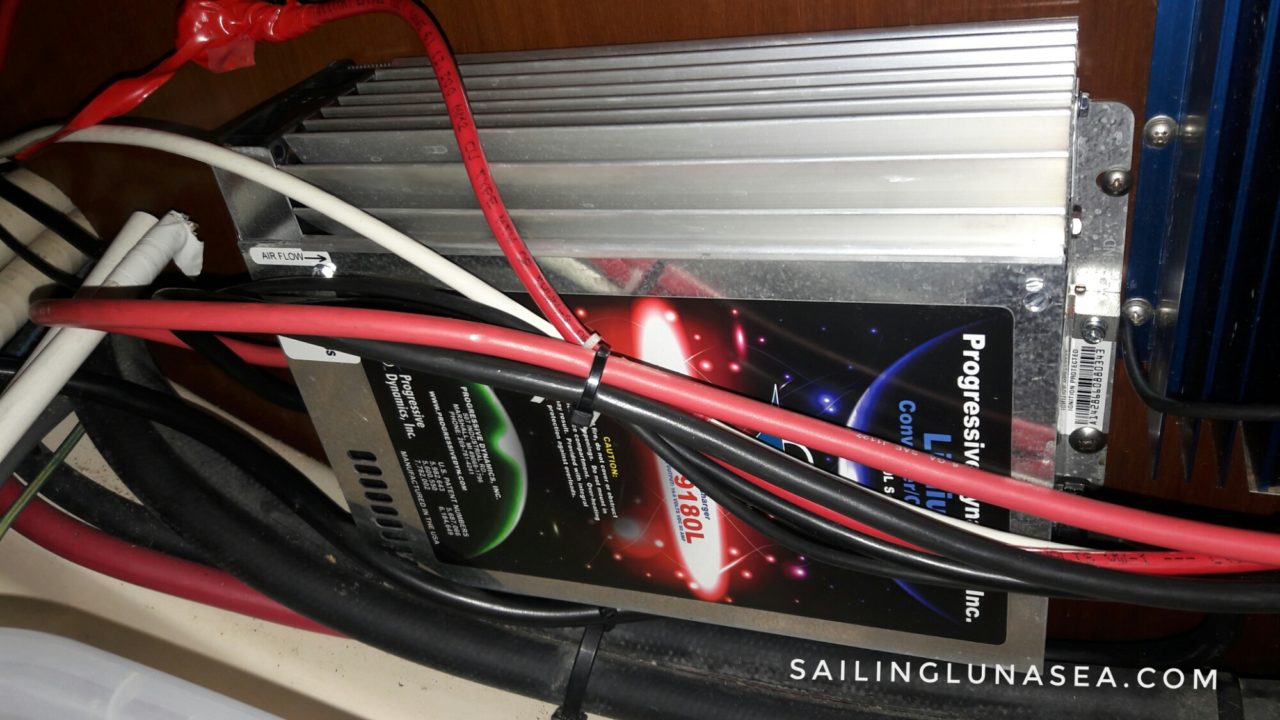
What Do We Do With All of That Power!?!
If we are full by 10am, what do we do with all of the power that is made the rest of the day, assuming it’s sunny? That is a good question. You don’t want your solar just cranking along with nowhere for the power to go. We debated taking off one of the solar panels. Eventually, however, I settled into a routine. Each morning, as soon as I start to see the battery power increase on our battery monitor, I turn on the watermaker. Ours is 12v and can be used purely off of solar, if we have enough. And guess what!? We definitely have enough on sunny days. We are making water from the sun, via our solar/lithium ion batteries. I don’t think we could have done this with our AGM batteries – simply because they take so long to charge. Lithium Ion charges very quickly – in a fraction of the time the AGM’s charge. This lets me start to charge, use the power, then finish charging – all in the same 5 to 7 sunny hours each day.
We also freely use our 12v fans, listen to music and no longer worry about our fridge having enough power to make it through the night. It’s finally beginning to be the lifestyle we expected – what we thought we were set up for when we left our slip in the marina. The only thing that would make it better is MORE POWER! You can never have enough stored power on a boat, right? Now if we only had that 4th battery! (Yes. While we don’t technically NEED that 4th battery – we could certainly use it! Unfortunately, our budget doesn’t appear to have room for it…anybody have a spare 75 ah Relion lithium ion battery sitting around?)
*I want to take a brief moment to give a shout out to my sales rep from Relion. Charlie has always responded quickly and with excellent advice. I started with almost zero knowledge of our system, and now feel pretty confident of how and why it all works together. When things weren’t going well, he helped me trouble shoot and find solutions – even though technically it was not a problem with his product. We just didn’t have a reliable way to charge efficiently. I am very thankful that he hung in there and helped me get it working properly – including answering random texts, following up frequently to see how we were progressing and shipping a charger directly to the Bahmas for us! And Mark is thankful that he no longer has a fear of flipping on light switches. Thank you Charlie!



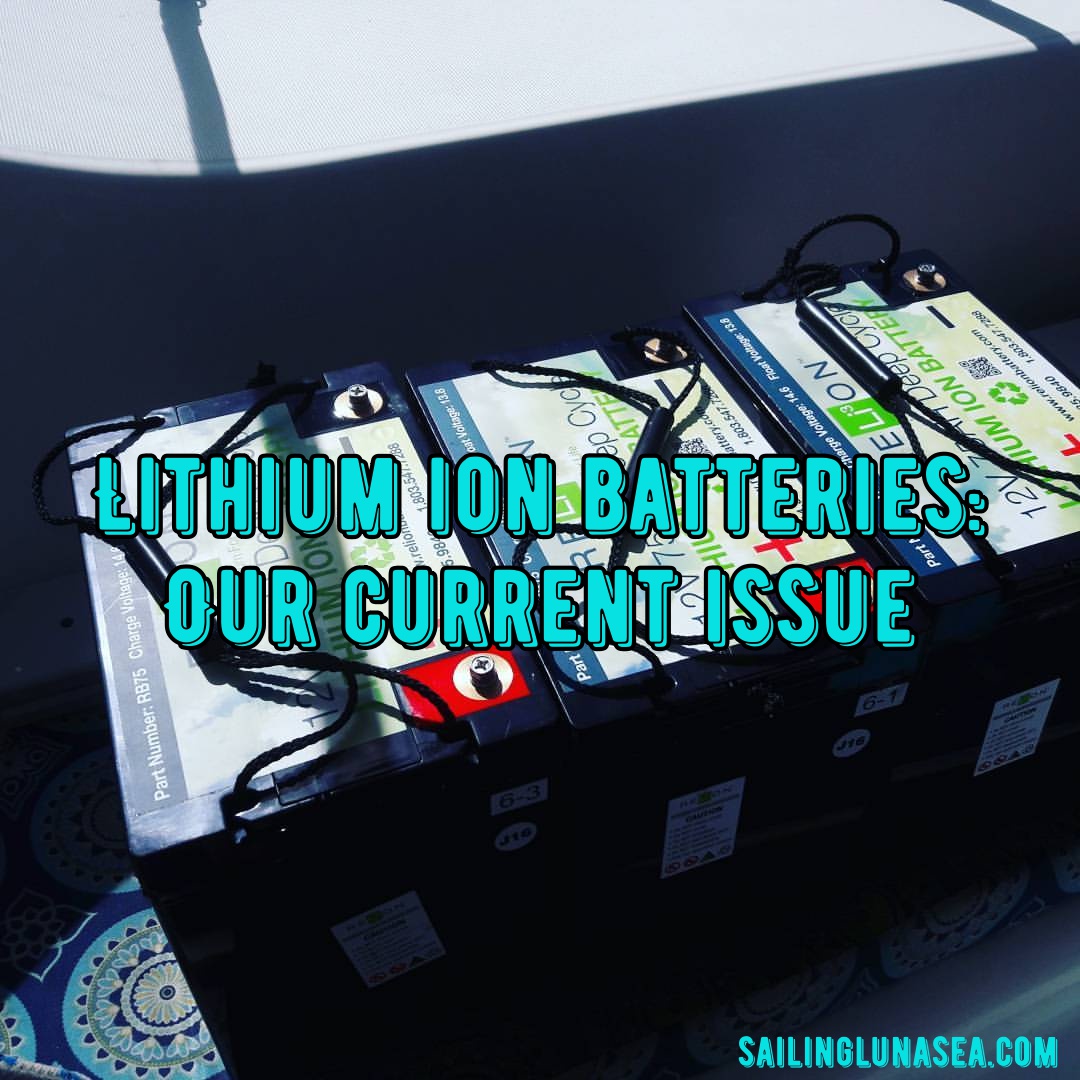


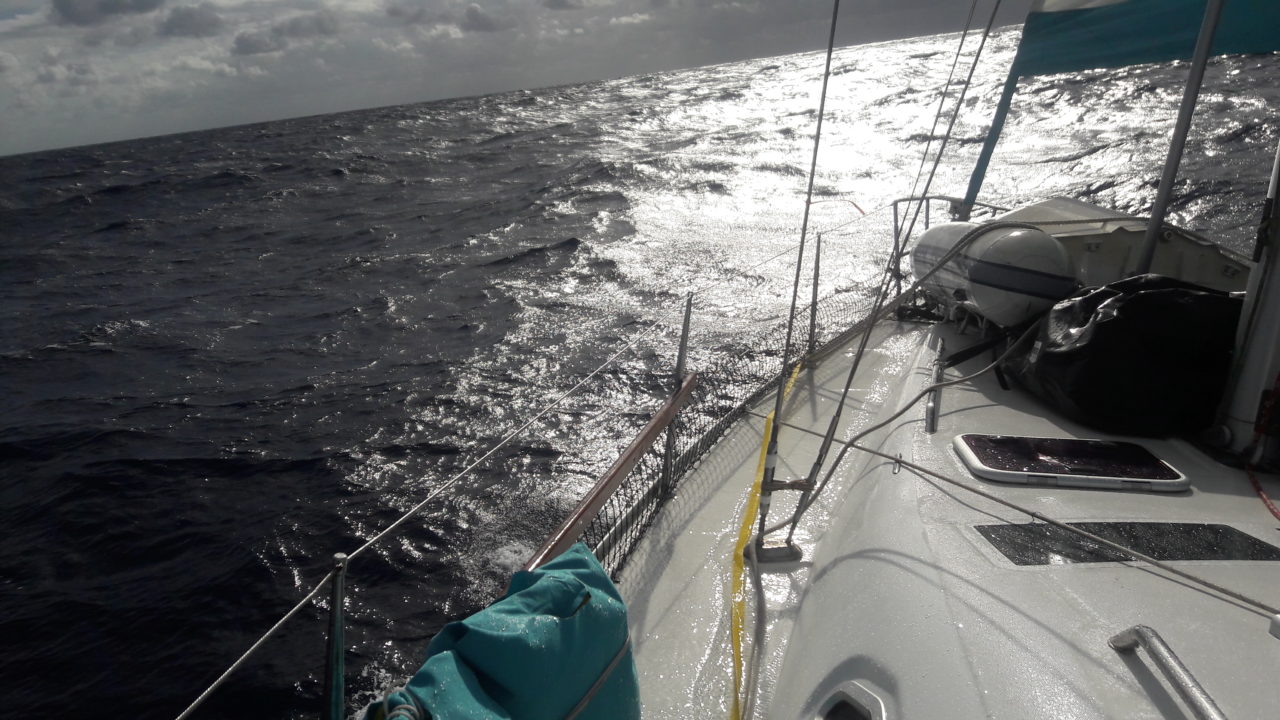
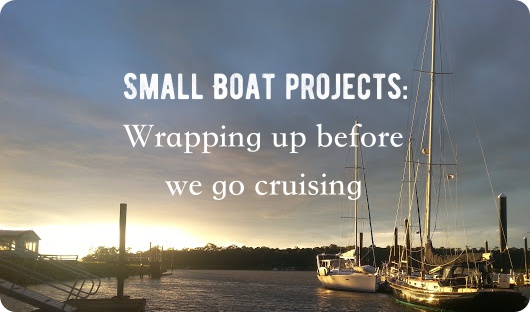
Hooray for fans, fridge, music and filtered water! Can’t be easy living with power police!
Yes! And being the power police is no fun, either!
We met at Malabar Cay in December as you were headed south (we were with Inspirare who has the Great Dane). We’re exploring LiFePO upgrade from lead acid and it was helpful to see the issues encountered after the “drop in” initial upgrade. Did you end up buying the 4th battery & do you anticipate another followup soon? Would you do anything differently to do it over again? Thank you, Michelle & Charly on S/V Rascal
Hey rascal – we remember you! We LOVE the upgrade. One more battery might be nice, but we find we have enough power for our needs. If we ever get a wind generator, I plan to attach it to its own battery(s) and charge controller – so more power can be added later. We just can’t mix old and new batteries in the same bank. I wish we understood more in the beginning – but there wasn’t any info that was at our beginner level. Which is why I wrote these posts 😁
Your posts will help guide us as we don’t know what we don’t know as you’ve said. Thank you!!
I saw your spoiler alert that you didn’t change your alternator, but I’ve been reading Nigel Calder’s comments (and others) that you will burn out alternator through overheating when charging lithium because it stays at full output – https://www.sailmagazine.com/diy/too-hot-to-handle
I’m researching if Balmar external regulator is the solution. Do you have external alternator regulator? What steps did you take to prevent alternator from overheating. Mainly thinking those infrequent but dreaded long motoring days where you have the diesel running for hours. I’m still on the hunt for any marine electrical installer with experience with lithium. Would love any recommendations. I’ve spoken to Chris at Relion and he is trying to connect me to someone else to answer my questions.
We haven’t had a problem yet – but will likely upgrade our alternator when this one finally dies. Try Just Catamarans in Florida – they seem to do a lot of Relion work.